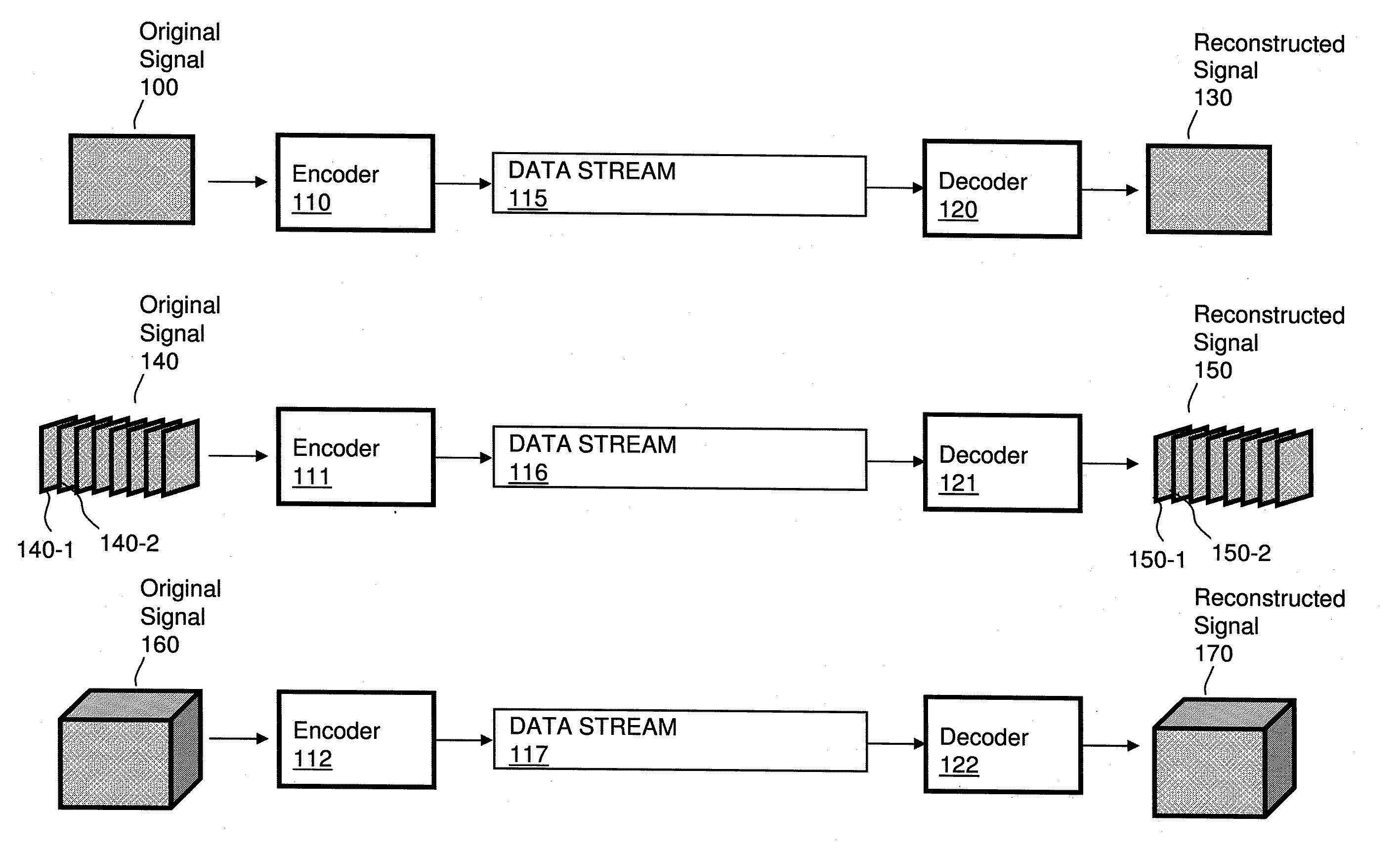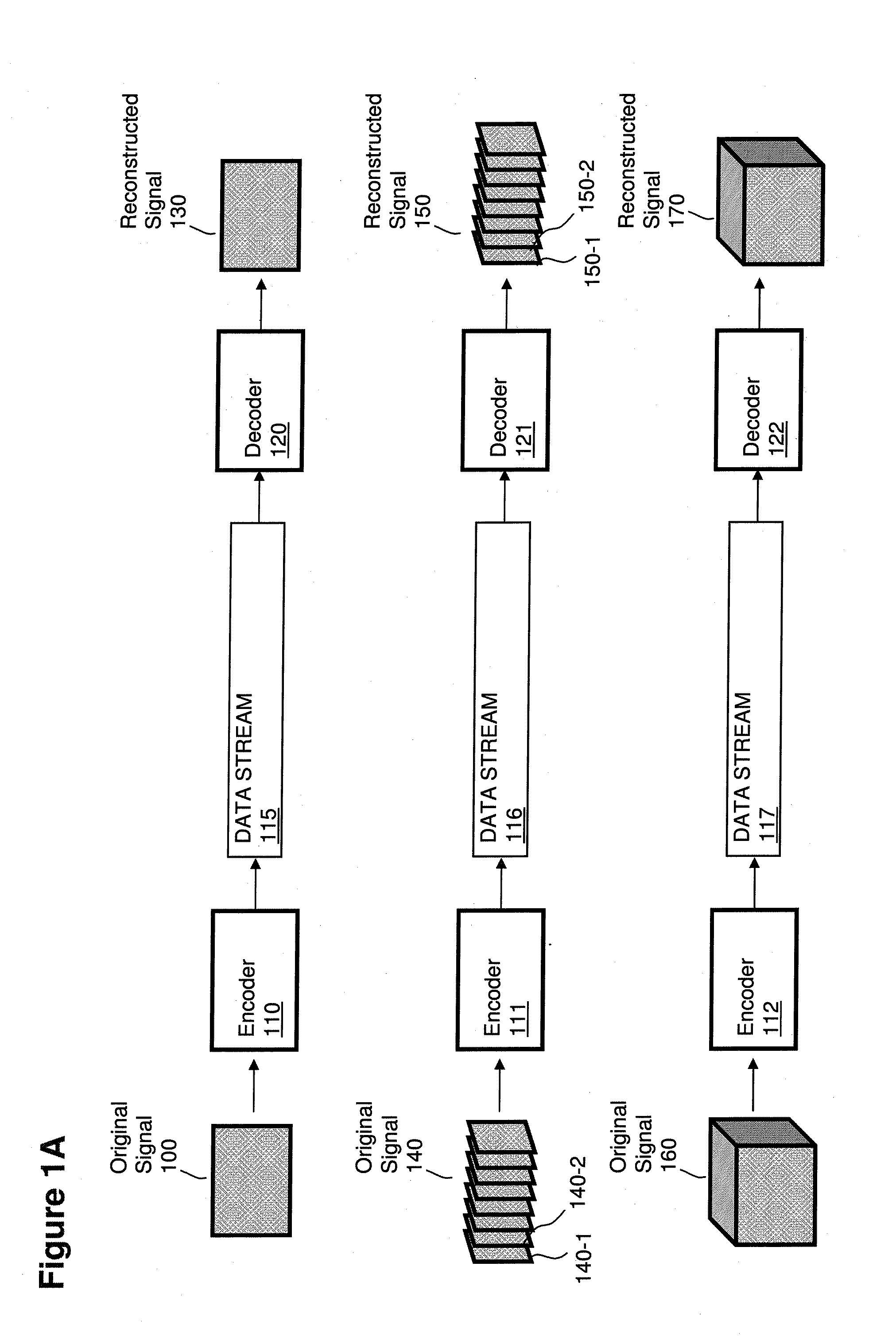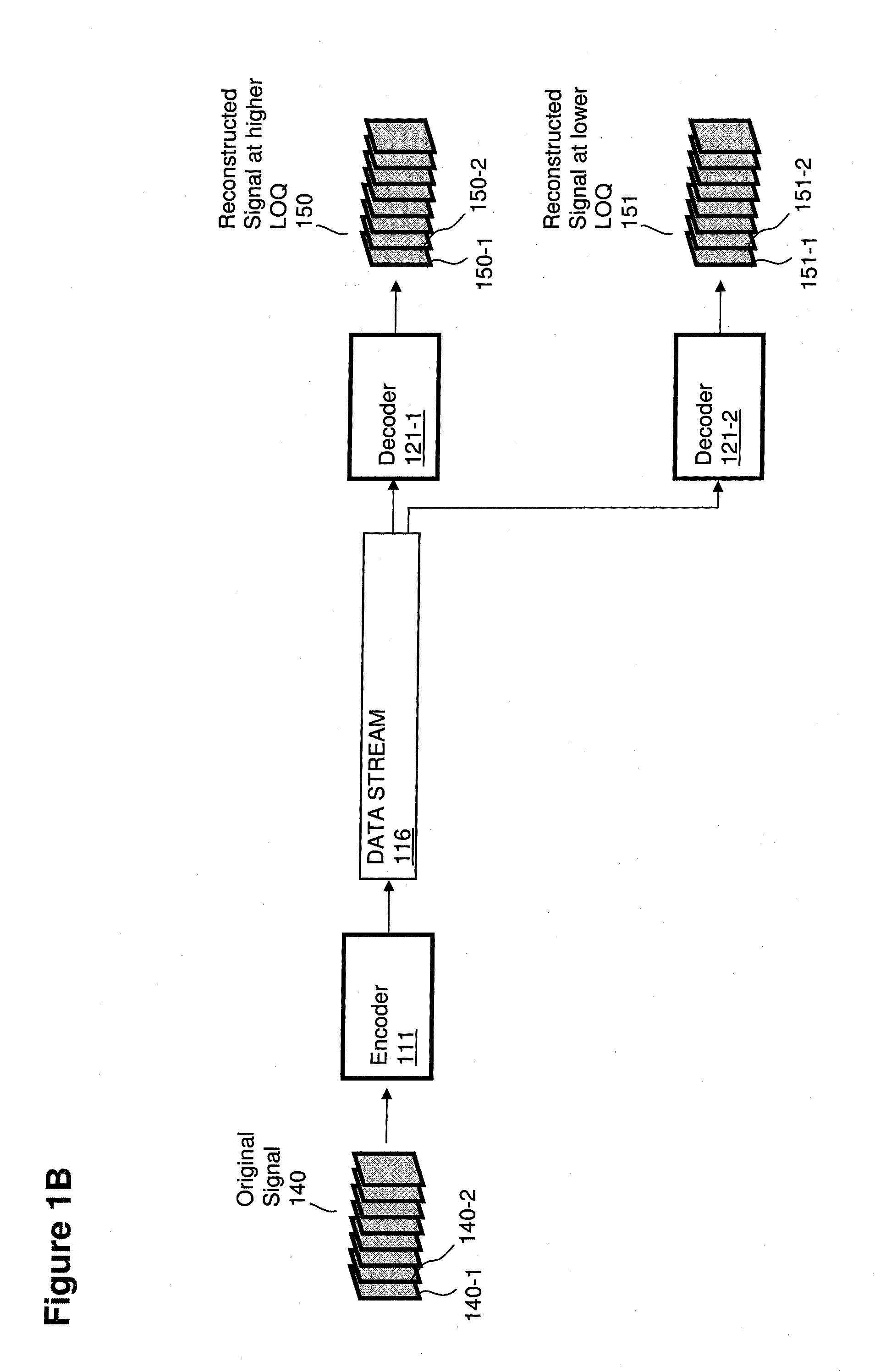Decomposition of residual data during signal encoding, decoding and reconstruction in a tiered hierarchy
a technology of residual data and signal encoding, applied in the direction of color television with bandwidth reduction, television systems, instruments, etc., can solve the problems of large portion of available processing power going unused, higher resolution images including a higher amount of camera noise and/or film grain, and achieve the effect of maintaining the efficiency advantage of leveraging and improving the efficiency of residual encoding and decoding
- Summary
- Abstract
- Description
- Claims
- Application Information
AI Technical Summary
Benefits of technology
Problems solved by technology
Method used
Image
Examples
Embodiment Construction
[0080]Methods illustrated herein are suitable for any type of multi-dimensional signals, including without limitation sound signals, multichannel sound signals, pictures, two-dimensional images, video signals, multi-view video signals, 3D video signals, volumetric signals, volumetric video signals, medical imaging signals, signals with more than four dimensions, etc.
[0081]For simplicity, along the description the illustrated embodiments usually adopt the use case of 2D images (e.g., either isolated pictures or frames / fields of a video signal), with each element (in such non-limiting example case typically referred to as a “pixel”, more in general referred to as “per”) being characterized by a set of color or other parameter settings in a suitable color space (e.g., YUV, RGB, HSV, etc.). Different color planes (e.g., the luminance-Y plane and the two chrominance—U and V—planes) are often encoded separately, and often with different resolutions (due to the lower sensitivity of the hum...
PUM
 Login to View More
Login to View More Abstract
Description
Claims
Application Information
 Login to View More
Login to View More - R&D
- Intellectual Property
- Life Sciences
- Materials
- Tech Scout
- Unparalleled Data Quality
- Higher Quality Content
- 60% Fewer Hallucinations
Browse by: Latest US Patents, China's latest patents, Technical Efficacy Thesaurus, Application Domain, Technology Topic, Popular Technical Reports.
© 2025 PatSnap. All rights reserved.Legal|Privacy policy|Modern Slavery Act Transparency Statement|Sitemap|About US| Contact US: help@patsnap.com



